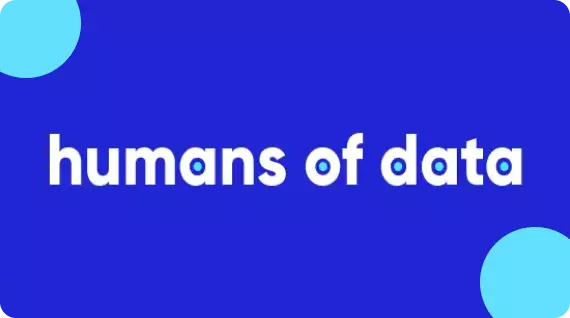The Top 11 Data Catalog Use Cases with Examples

Share this article
What is a data catalog used for? A data catalog is a collaborative workspace that provides context, control, and connection across your entire data estate. With a data catalog powered by active metadata, any data user in any business domain can locate, understand, and use the power of your company’s data.
Modern data problems require modern solutions - Try Atlan, the data catalog of choice for forward-looking data teams! 👉 Book your demo today
Read on to learn more about the problems a data catalog can solve and use cases when a data catalog can help.
Table of contents #
- What problems does a data catalog solve?
- Data catalog use cases and examples
- Putting it all together
- Related reads
What problems does a data catalog solve? #
Without a data catalog, your company may struggle to manage and utilize its data. You may be experiencing problems like:
- your data analysts spend too much time resolving tickets to fix broken dashboards.
- your information security team is unable to secure personally identifiable information (PII) to remain compliant with regulations like GDPR.
- your storage costs soar as you maintain duplicative datasets.
- your data stewards frequently have to provide context for data assets.
- different departments and teams have different definitions for the same term or metric.
- you feel unprepared for major data projects like migrations.
Data catalogs can resolve these issues and more. With a data catalog, you can
- reduce the amount of time spent troubleshooting data issues.
- enable self-service for data consumers.
- secure your data and help your company become compliant.
- save money by decreasing data storage and computational costs.
- avoid data problems before they arise.
With such a wide range of applications, data catalogs are vital for any data-driven company to manage and maximize its data. And it’s not just the company that benefits. Anyone who works with data––from data engineers to customer success representatives––can use a data catalog to work more efficiently.
Data catalog use cases and examples #
Data catalogs have a variety of use cases across multiple business domains. Information security, data engineering, operations, and analytic functions all are more effective with a data catalog.
These eleven examples are some of the top data catalog use cases.
- Root cause analysis
- Impact analysis
- Proactive data issue alerting
- Data compliance management
- Cost optimization
- Data migration
- Data lifecycle management
- Business glossary
- Metrics catalog
- Data discovery
- Data exploration
Root cause analysis #
Locating the source of a data issue can be time-consuming. A data analyst working to fix a broken dashboard may spend hours investigating its data lineage to track down the responsible column. A data catalog can speed up this analysis by streamlining the identification of upstream data assets.
Impact analysis #
Any modification to a data asset, like a schema change, can feel risky because it might unintentionally affect downstream datasets and workflows. A data catalog can visualize how modifying or taking data offline could break workspaces or dashboards so that you can foresee and address any potential problems.
Proactive data issue alerting #
When using a BI tool, data consumers want to feel confident that the data they’re viewing is accurate. A powerful data catalog can trace a report’s data lineage to its sources. If there is an issue anywhere in the data pipeline, the catalog can alert the consumer. This proactive alerting creates trust with data consumers.
Data compliance management #
With a data catalog, you can protect sensitive data by automatically flagging columns with PII and controlling access to those assets. With shared knowledge of where all sensitive data is created, stored, and used, it’s easier to comply with regulations like GDPR.
Cost optimization #
Resource-intensive queries and redundant data assets can add up to major expenses. A data catalog can help you find unused tables or pipelines, saving storage. Additionally, data catalogs can pinpoint infrequently used queries or calculations so that you can divert computational resources to where they’re needed most.
Data migration #
Migrations are expensive and risky endeavors. Costs can quickly spiral out of control when migrations result in data outages and loss. A data catalog can assist in mapping data across systems to achieve a clear view of potential impacts across your data stack. Data catalogs enable this crucial prep work, ensuring a successful migration while mitigating risk.
Data lifecycle management #
Properly managing data throughout its lifecycle has many benefits. You can prepare for potential data breaches or system failures, and you will know how to recover your data in case of a catastrophic event.
Business glossary #
Your company may have a business glossary with common definitions for key terms. But many glossaries are siloed, so data consumers can’t use them to understand the data they’re using. A data catalog can act as a single source of truth for all your terms and data definitions. Additionally, a data catalog simplifies documenting and sharing these definitions.
Metrics catalog #
In a metrics-driven environment, calculations like DAU/MAU/WAU, ARR, and churn rate are important considerations in any business decision. However, without a data catalog, stakeholders may be using different calculations and data sources for the same metric. A data catalog can define these metrics so that all decision-makers are working from a single source of truth.
Data discovery #
Data consumers can spend a lot of time locating the data they need. They also have to find subject matter experts and uncover an asset’s context. As a result, data teams often spend too much time answering questions and fulfilling requests. These same requests can appear repeatedly.
A data catalog can provide context and metadata so that data consumers can use data on their own. Any time a question receives an answer, it can be added to the data catalog to prevent repeat asks.
Data exploration #
Finding and understanding the data you need are the first steps. To use the data, you’ll need to explore it through sampling or simple queries. A powerful data catalog helps data consumers with basic analysis. With a data catalog, data consumers can access and even query data on their own, saving data engineers and analysts time.
Putting it all together #
A robust data catalog can save you time, reduce your costs, and secure your company’s data. See how Atlan customers have been using our third-generation data catalog to bring their data to life.
Data catalog use cases: Related reads #
- What Is a Data Catalog? & Do You Need One?
- Best Alation Alternative: 5 Reasons Why Customers Choose Atlan
- Enterprise data catalog: Definition, Importance & benefits
- Data catalog benefits: 5 key reasons why you need one
- Open Source Data Catalog Software: 5 Popular Tools to Consider in 2023
- Data Catalog Platform: The Key To Future-Proofing Your Data Stack
- Top Data Catalog Use Cases Intrinsic to Data-Led Enterprises
- AWS Glue Data Catalog: Architecture, Components, and Crawlers
- Airbnb Data Catalog — Democratizing Data With Dataportal
- Lexikon: Spotify’s Efficient Solution For Data Discovery And What You Can Learn From It
- Google Cloud Data Catalog Guide - Everything You Need to Know
Share this article









